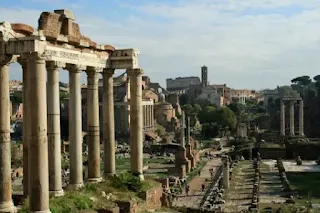Exploring the Colosseum in Rome: A Guide to History, Architecture, and Visitor Tips
Introduction
The Colosseum, or Flavian Amphitheatre, stands as one of Rome’s most enduring landmarks and is a symbol of the grandeur of ancient Rome. Famous for hosting gladiator battles, public spectacles, and historical events, this monumental structure attracts millions each year. This article dives into the history, architecture, fascinating facts, and essential tips for visiting the Colosseum.
History of the Colosseum
Built between 70-80 AD under the rule of Emperor Vespasian and completed by his son Titus, the Colosseum was designed as a gift to the Roman people. It served as a stage for public spectacles, including gladiator battles, animal hunts, and even mock naval battles. With a seating capacity of around 50,000 to 80,000 people, it symbolized Roman power, engineering excellence, and the cultural importance of public entertainment. Despite its purpose, it has also witnessed destruction over centuries, including earthquakes and stone robbing for other Roman buildings, yet it remains a marvel of ancient architecture.
Architectural Marvel
The Colosseum is an oval amphitheater made primarily of concrete and sand, with a complex design that includes arches, tunnels, and subterranean chambers. Its exterior features three tiers of arches, originally adorned with statues, and an attic story that once held decorative shields. Inside, a labyrinthine network called the hypogeum lies beneath the main floor, where gladiators and animals awaited their battles. This innovative design allowed for efficient crowd management, quick exits, and even controlled flooding for staged naval battles.
Interesting Facts About the Colosseum
World Heritage Site: The Colosseum is part of UNESCO's World Heritage Sites and one of the New Seven Wonders of the World.
A Complex System of Trap Doors: The hypogeum contained trap doors, elevators, and pulleys that allowed animals and performers to appear suddenly in the arena.
Symbol of Anti-Capital Punishment: Since 1999, the Colosseum has been illuminated in gold whenever a country abolishes the death penalty.
Modern-Day Repairs: The Colosseum has undergone several preservation projects, with ongoing restoration to protect it from further damage and the effects of pollution.
Best Ways to Experience the Colosseum
Guided Tours: Learn about its rich history and architecture with a guided tour. Many tours also include special access to restricted areas like the hypogeum or upper levels.
Self-Guided Tour: If you prefer to explore at your own pace, audio guides and informational boards are available throughout the site.
Night Tour: For a unique experience, consider a night tour to see the Colosseum illuminated, a spectacular sight that adds to its grandeur.
Colosseum and Roman Forum Combo: Many tickets include entry to both the Colosseum and the nearby Roman Forum and Palatine Hill, making for a comprehensive journey through ancient Rome.
Tips for Visiting the Colosseum
Buy Tickets in Advance: Avoid long lines by booking your tickets online, ideally including skip-the-line or guided options.
Best Times to Visit: Early morning and late afternoon are less crowded and offer softer light for photography.
Prepare for Security Checks: For safety, expect bag checks at the entrance and avoid bringing large bags or backpacks.
Wear Comfortable Shoes: The terrain can be uneven, and exploring all levels and the surrounding area involves a fair amount of walking.
Nearby Attractions
Roman Forum and Palatine Hill: Both accessible with a combo ticket, these ancient ruins provide more insights into the daily life of ancient Romans.
Arch of Constantine: Located right next to the Colosseum, this triumphal arch commemorates Emperor Constantine’s victory and is a must-see.
Capitoline Hill: Visit this historic hill for incredible views over the Roman Forum and ancient Rome.
Frequently Asked Questions (FAQs) About the Colosseum
1. What is the Colosseum?
The Colosseum is an ancient amphitheater in Rome, built around 70-80 AD, famous for its gladiator battles, public events, and architectural grandeur.
2. Where is the Colosseum located?
The Colosseum is in the heart of Rome, near the Roman Forum and Palatine Hill. The exact address is Piazza del Colosseo, 1, 00184 Rome, Italy.
3. What are the Colosseum’s opening hours?
The Colosseum is open every day except January 1st and December 25th. Opening hours vary by season, typically from 8:30 a.m. until one hour before sunset. Be sure to check the official website for updated hours.
4. How much does it cost to visit the Colosseum?
Ticket prices vary depending on the type of experience. Basic entry tickets start around €16, with additional costs for skip-the-line or guided tour options. Combination tickets including the Roman Forum and Palatine Hill are available.
5. Should I buy tickets in advance?
Yes, buying tickets in advance is highly recommended, especially during peak tourist seasons, to avoid long lines.
6. How long does it take to tour the Colosseum?
A typical visit takes 1 to 2 hours, but if you’re also visiting the Roman Forum and Palatine Hill, you may want to plan for 3 to 4 hours total.
7. Are there guided tours of the Colosseum?
Yes, there are guided tours available in multiple languages. Tours often include exclusive areas like the hypogeum (underground chambers) and the upper levels, which are not accessible with a standard ticket.
8. Can I visit the Colosseum at night?
Yes, the Colosseum offers special night tours, which provide a unique, illuminated view of the ancient amphitheater and a quieter experience with fewer crowds.
conclusion
In essence, the Colosseum stands as a testament to the grandeur and resilience of ancient Roman civilization. Walking through its historic corridors, you can almost hear the echoes of roaring crowds and the clash of gladiators, bringing to life the powerful legacy of this architectural marvel. Whether you're captivated by history, inspired by engineering, or simply exploring the wonders of Rome, a visit to the Colosseum promises an unforgettable connection to a past that continues to shape our world today.



















Comments
Post a Comment